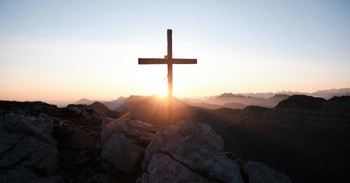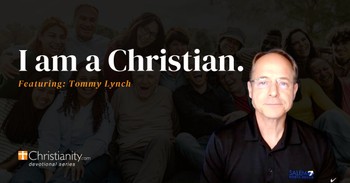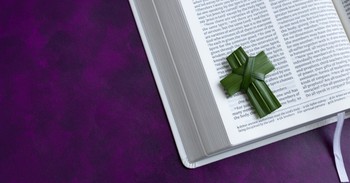
Ever since the early believers felt the ground shake under their prayer meeting (Acts 4:31), Christians have realized that when they talk to God, things happen. The history of prayer certainly has had its ups and downs. No doubt, wars have been fought with both sides seeking divine assistance. We sometimes treat prayer like a magic wand, but God usually refuses to be so manipulated. Sometimes he grants exactly what's requested; often he has a better idea. Still, Christian history is packed with earnest prayers and amazing answers.
Soup Stirring
Sit with Martin Luther by the sickbed of Philipp Melanchthon. The year is 1540. These two man had already engaged in what often looked like a good cop-bad cop routine that changed the face of Europe. "I am rough, stormy, and altogether warlike," Luther once wrote, "but Master Philippus comes along softly and gently, sowing and watering with joy." Where Luther made brash pronouncements, Melanchthon offered gentle persuasion.
But now it looked like Philipp was done for, and Martin prowled his bedside. "O Luther, is this you?" Philipp murmured. "Why don't you let me depart in peace?"
"Because we can't spare you yet, Philipp. We cannot spare you yet." For nearly an hour, Luther knelt in prayer. Rousing from his stupor, Melanchthon once again begged his friend to let him die, but Luther kept praying. And he ordered some soup for the dying man.
Refusing the soup, Melanchthon said a third time, "Luther, why will you not let me go home and be at rest?"
"Because we cannot spare you yet, Philipp," came the thundering Reformer's reply. "Now, take this soup, or else . . . or else. . . ." What leverage did he have? "Or else I will excommunicate you!"
The joke worked--along with the prayers and the soup. The dying man came back to health. Luther commented later, "God answered my prayer and gave me my brother Melanchthon."
The following years were very important for Melanchthon as he organized and solidified the gains of the Lutheran movement. It was Melanchthon who crafted the Augsburg Confession, and he tried valiantly to iron out differences with the Calvinists and the Roman Catholics. Luther was right: they couldn't spare him. As it turned out, Philipp would outlive Martin by fourteen years, taking leadership of the Lutheran movement at a crucial time in its history.
The Pilgrims' Feast
Everyone knows how the Pilgrims threw a feast in 1621, inviting the local tribespeople to share their first harvest. But they didn't plant enough in 1622, so that harvest was too scarce for celebration. In 1623 they did extra planting, but a serious drought threatened their crops. For twelve weeks, it didn't rain. Even the natives had never seen anything like it.
The Pilgrims wondered if God was angry with them. One of their leaders, Edward Winslow, wrote that the group decided to humble ourselves together before the Lord by fasting and prayer. To that end, a day was appointed by public authority and set apart from all other employments.
The day-long prayer meeting began under clear skies, but by late afternoon the weather was overcast, the clouds gathered on all sides. On the next morning distilled such soft, sweet and moderate showers of rain, continuing some fourteen days and mixed with such seasonable weather, as it was hard to say whether our withered corn or our drooping affections were most quickened or revived, such was the bounty and goodness of our God!
Winslow added that the tribespeople took note of the goodness of our God towards us, that wrought so great a change in so short a time, showing the difference between their conjurations and our invocation on the name of God for rain.
Fish Story
A century and a half later, an American army encamped for the winter at Valley Forge, Pennsylvania (just down the road a few miles from our Glimpses offices). British troops had taken Philadelphia and were enjoying the relative comforts of that city while, just fifteen miles northwest of the city, the revolutionary soldiers were freezing and starving. In these unusually bitter months, rations were scarce, and so were blankets. Many of the men died from exposure.
General George Washington often would be seen praying about the situation. One officer wrote, On every practicable occasion, he sought God's blessing, and when no chaplain was present, he often called his staff officers around him and lifted his heart and voice in prayer.
One morning the troops noticed something odd about the Schuylkill River. There was a disturbance in the water, as if it was boiling. When they investigated, they found thousands of shad swimming upstream. This was far too early in the season for these fish to be migrating, but the soldiers didn't stop to puzzle over the situation. They waded in with pitchforks and shovels and flung onto the banks all the fish they could.
Miraculously, the army had all the food it needed, with some salted away for future meals.
Heavenly Haystack
The weather was quite different in the muggy summer of 1806 in western Massachusetts when a thunderstorm drove five Williams College students to seek refuge. Samuel Mills had gathered a few buddies for an outdoor prayer meeting, and after they took cover under the eaves of a lean-to, beside a haystack, they got talking about a geography class at school. This led them to pray for the people of Asia, the continent the class had just been studying.
You might have noticed that God often asks us to help answer our own prayers. That's what happened here. Within a few years, those collegians had inspired the founding of the American Board of Commissioners for Foreign Missions. Several of the students, including Adoniram Judson, went to Asia as missionaries (the first foreign missionaries sent from America), and Samuel Mills stayed stateside to recruit others. (He later helped organize the American Bible Society.)
That Haystack Prayer Meeting sparked an explosion of American support for missions that continues today.
Reviving New York
Another kind of prayer meeting made a difference half a century later in New York City. It was not a good time for churches in downtown Manhattan, and the North Dutch Reformed Church on Fulton Street resorted to creative measures, hiring a businessman named Jeremiah Lanphier as a sort of outreach minister. He knocked on doors in the neighborhood and distributed pamphlets and Bibles, but response generally was dismal.
"One day as I was walking along the streets," Lanphier wrote in his journal, "the idea was suggested to my mind that an hour of prayer, from twelve to one o'clock, would be beneficial to businessmen." The idea blossomed: a weekly prayer time, open to anyone, bankers to broom-pushers. Come when you can, leave when you must. Handbills advertised the first meeting--at noon on September 23, 1857.
Lanphier waited for the first attenders. No one showed up for the first ten minutes, twenty, thirty. Then one man straggled in, then another. The hour ended with six men present, praying. The following week there were twenty, the next week forty. Soon a hundred. Some of them wanted to meet every day. Rooms were packed. The church had to ask another church to handle the overflow. When churches ran out of room, the prayer meetings moved to theaters. By March, 1858, the New York Times could report that Burton's Theater on Chambers Street was packed as famous preacher Henry Ward Beecher led a crowd of 3,000 in prayer. Some estimated that up to a million people became Christians in the 1857-58 revival.
What caused such immense interest in prayer? A stock market crash might have had something to do with it. Business leaders enslaved by money were suddenly seeking a more reliable master. When he started his humble prayer time, Jeremiah Lanphier had no way of knowing about the impending financial collapse. He just knew people needed to pray.
Prayer Walk
In 1989, half a world away, another prayer meeting had an even greater effect on a society. For several years already, four churches in Communist Leipzig, East Germany, had been holding weekly prayer meetings every Monday evening at five. Political change was in the air during 1989, and these meetings began to grow.
After the prayer meetings, people would light candles and walk peacefully through the city streets, a gentle protest against the Communist regime. The peaceful protests only grew. As many as 50,000 eventually joined in.
Then came October 9, what Germans began to call "the turning point." The East German government got involved, sending in police and soldiers with orders to shoot the protesters. Many feared a bloodbath. When one church opened its doors for the weekly prayer meeting, two thousand Communist Party members rushed in to take all the seats. No problem: the church opened the balconies for the usual protesters and, like it or not, the Communists had to sit through a prayer meeting.
Did prayer silence the weapons? That's what many German Christians believe. Amazingly, shots weren't fired that night in Leipzig as 70,000 people marched peacefully through town. Or the next Monday, when 120,000 marched. Or the next, when there were 500,000--nearly the entire population of Leipzig.
In early November nearly a million marched through the capital, East Berlin. Police defied orders to shoot. The president resigned in disgrace. And soon there was an opening in the famous Berlin Wall. The stunning developments spread throughout Eastern Europe as peaceful revolutions dismantled Communist regimes.
What had these prayer meetings wrought? The New Republic reported, "Whether or not prayers really move mountains, they certainly mobilized the population of Leipzig." Certainly there were political and social undercurrents, but don't miss the spiritual dimension. It was obvious to the people most closely involved. A few weeks after that dramatic "turning point," someone put up a banner in Leipzig. "Wir danken Dir, Kirche," it read. "We thank you, church."


